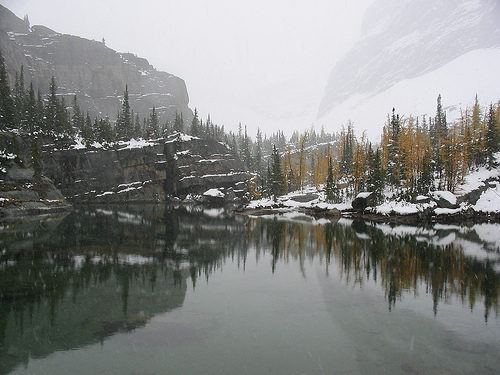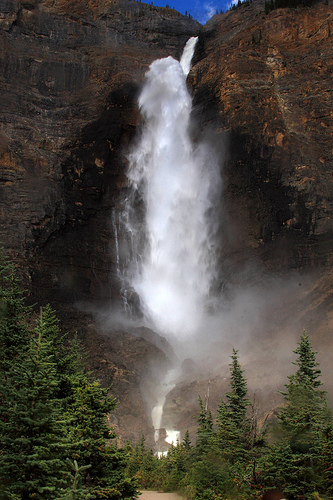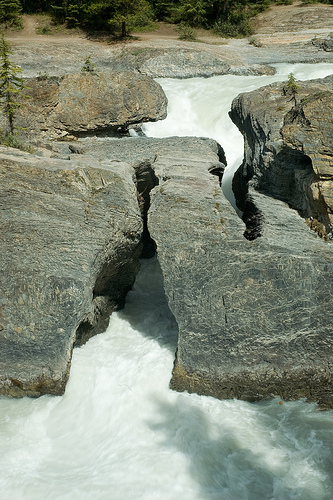Some of the Oldest Fossils on Earth in Yoho National Park
The Continental Divide is more exciting than it sounds. Beginning on the Western most tip of Alaska, twisting through the Yukon and down through Canada, creating the Rockies and continuing into Mexico, the Continental Divide cuts through North America. Not only is this an unfathomable geological mass, but here’s the crazy part: all of the water on the Western slope flows into the Pacific Ocean, and all the water on the Eastern slope flows into the Atlantic (and the Gulf of Mexico and Hudson Bay). All of it.
In the United States, both Glacier and Yellowstone National Parks lie on the Continental Divide. Yoho National Park in Southern British Columbia is their Northern neighbor. Almost onomatopoetic, “Yoho” comes from the Cree word for “amazement.” Featuring the Canadian Rocky Mountains, Yoho has incredible scenic views and stunning waterfalls. The park also has an unusual mixture of prehistoric fossils and modern development.

At 4,900 feet above sea level, the Burgess Shale was a boon for paleontologists when Charles Walcott discovered it in 1909. The sedimentary rock contains fossils from the Cambrian era, more than 500 million years old. These fossils, some of the oldest on earth, depict the first multi-cell creatures on the planet. In particular, the Burgess Shale helps scientists because the fossils capture the soft parts of the bodies with remarkable clarity, an important factor when studying invertebrates. The fossils influenced the development of taxonomies and our understanding of early life on earth. (UNESCO declared the Shale a World Heritage Site in 1981.)

Yoho also features one of the engineering marvels of the railroad era. To bridge the divide between Eastern and Western Canada, the government built a railroad in the late 1800s. Lying tracks across the Rocky Mountains may seem hard, but it is still harder than it seems. The Chief Engineer on the project designed tunnels to spiral in and out of the mountains. Rather than a direct climb, the train followed a switchback of sorts, emerging ever higher as it twisted out of the mountains. The Spiral Tunnels are on view as a historical site of Canada in Yoho.

Part of the Canadian Rocky Mountain Parks, Yoho is connected to Banff, Jasper and Kootenay National Parks. One last note, grizzly bears do live throughout the parks. There are 60 bears, or so, including 16 reproductive females. They mostly live in the Northern portions of Banff National Park. The Canadian National Parks strive to protect the habitat of the endangered bear, while protecting park visitors.
What spectacular portion of the Continental Divide do you want to explore?



Follow us on Twitter to get the latest on the world's hidden wonders.
Like us on Facebook to get the latest on the world's hidden wonders.
Follow us on Twitter Like us on Facebook